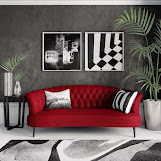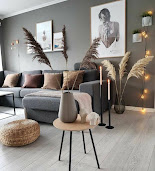The Art of Emotion: Unveiling the Palette – Color Psychology in Interior Design
In the realm of interior design, colors are not merely visual stimulants; they are powerful tools that can shape emotions, influence moods, and transform spaces. The study of color psychology delves into the profound impact of hues on human behavior and well-being. In this exploration, we unravel the secrets behind the artful use of colors in interior design, where every shade is a brushstroke on the canvas of emotions.
The Power of Primary Hues:Red: The fiery passion of red can infuse energy into a room. In spaces like kitchens or dining areas, it stimulates appetite and conversation. However, its intense nature also demands balance to avoid overwhelming the senses.
Blue: Serenity and calmness characterize the cool embrace of blue. Ideal for bedrooms or spaces designed for relaxation, blue fosters a sense of tranquility. Different shades can evoke a range of emotions, from the soothing light blues to the deep, contemplative navy.
Yellow: The color of sunshine, yellow radiates warmth and positivity. In interiors, it's often used to create lively, inviting atmospheres. However, excessive use may lead to feelings of anxiety, so moderation is key.
Earthy Tones and Neutrals:
Green: With its connection to nature, green brings balance and harmony to interior spaces. It's an excellent choice for living rooms and areas where people gather. The versatility of green allows it to be both calming and refreshing.Brown: Representing stability and security, brown can ground a space. Commonly associated with natural elements, it's a popular choice for furniture and accents. Too much brown, though, can create a dull ambiance, so it's often paired with other colors.
Gray: A neutral canvas that complements almost any color scheme, gray is versatile and sophisticated. Depending on the undertones, it can evoke feelings of warmth or coolness. It's a popular choice for creating modern and timeless interiors.
Purple: Often associated with luxury and creativity, purple is a regal choice for accent pieces. In moderation, it adds a touch of opulence without overpowering the space.
Orange: The color of enthusiasm and energy, orange injects vibrancy into a room. It's commonly used in spaces where creativity and stimulation are desired. However, like red, it should be used judiciously to avoid overwhelming the senses.
Creating Harmony through Color Combinations:
Successful interior design often involves the thoughtful combination of colors to create a harmonious palette. Analogous color schemes, where colors are adjacent on the color wheel, offer a sense of unity, while complementary schemes, using colors opposite each other, provide dynamic contrast.
Conclusion:
In the symphony of interior design, colors play the role of conductors, orchestrating emotions and defining the ambiance of a space. Understanding the psychology behind colors empowers designers to craft environments that not only please the eye but also resonate with the soul. So, the next time you embark on a design journey, remember: every color tells a story, and the canvas is yours to paint.












Comments
Post a Comment